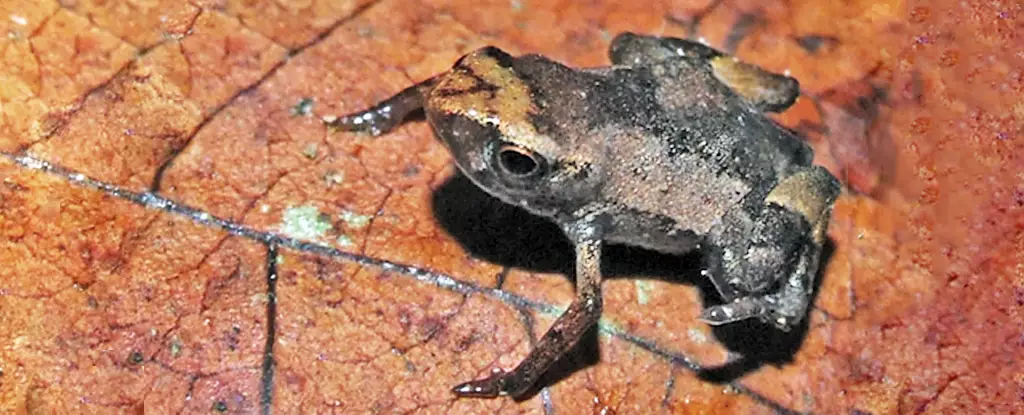Flea toads, a species of frogs found in Brazil’s Serra Bonita mountain range, have recently gained attention for their unbelievably small size. These tiny leaf-litter-patterned amphibians have been the subject of much research, leading scientists to conclude that they may be the smallest vertebrate species in the world.
Measuring only about 7.1 millimeters on average, the adult male flea toads have surpassed the previous record-holder, Papua New Guinea’s Paedophryne amauensis, in terms of size. The females of this species, including Brachycephalus pulex, tend to be slightly larger, with an average size of 8.15 millimeters. This size difference is likely due to the need to accommodate developing eggs inside their bodies.
Despite their miniature size, flea toads face certain challenges associated with being so small. A study from 2022 speculated that vertebrates with internal skeletons may face physical limitations at around 6 millimeters in size. This limitation includes difficulties in fitting all necessary cell types to create vital organs, including a large brain, or producing enough eggs for a sustainable population. As a result, tiny species like flea toads may lose common frog features such as the ability to jump or hear.
In addition to their small size, flea toads exhibit unique anatomical adaptations. For example, they are missing their first and fourth fingers, leaving only a distinct, long third finger, a shorter second finger, and a vestigial fifth finger. Furthermore, the only hard bony parts of their bodies are their spine and skull, while the rest is made up of softer cartilage. Their underdeveloped ears suggest that they may not have the ability to hear or vocalize like other frog species.
Despite these physical limitations, flea toads have managed to adapt to their environment and thrive in their mountainous forest homes. They are skilled predators, hunting for tiny prey in the dense leaf litter and epiphytes. Their small size offers advantages such as requiring less food and being less vulnerable to predators, making them elusive to researchers and other potential threats.
Flea toads represent a fascinating example of evolutionary adaptation to extreme size constraints. Their status as the smallest frog and vertebrate species in the world highlights the diversity and complexity of the natural world. Studying these tiny amphibians not only sheds light on the challenges they face but also reveals the remarkable ways in which they have overcome them to survive and thrive in their unique habitats.

Leave a Reply